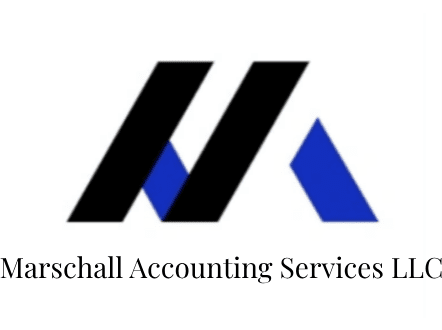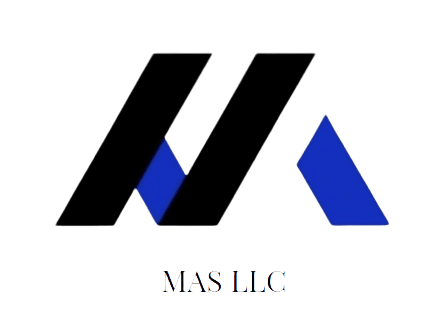Article: Small Business Tax and Accounting Updates: Ending 2022
Category: 1040 income tax, IRS, Small Business

Small Business Tax and Accounting Updates: Ending 2022
Jessica I. Marschall, CPA
Tax Season 2022 is just around the corner. Our firm put together the most important and prevalent tax and accounting issues pertaining to small businesses. We have conferenced with our CPA peers, and all agree these are the hottest issues to tackle.
One: Separation of Duties
Many small businesses feel they are too small to need separation of duties. What is separation of duties? Essentially, there should be more than one set of eyes on money coming in and money going out. This is where most fraud and theft occur in small businesses. Unless the business is run by a single individual, there must be oversight of these functions.
Two: Estimated Taxes
Our federal income tax is a pay-as-you-go system. Businesses are required to make federal estimated income tax payments. States that have an income tax, require this, as well. These payments can be made online. The IRS and state taxing authorities make it easy to pay taxes. Failure to file and pay estimated taxes can create a huge mess for a business.
The due dates are:
4/15 First quarter
6/15 Second quarter
9/15 Third quarter
1/15 Fourth quarter
Three: Keep Deductions Legitimate
Our firm has been inundated with emergency tax engagements to assist clients through an examination or audit. Many times, these are clients who have completed their own taxes. What are some of the hot button issues? Look forward to the Working with Professionals section.
1. Individuals did not properly report the sale of their primary home. The IRS allows an exclusion of up to $500k capital gain for taxpayers filing Married Filing Jointly and $250k for Single taxpayers. There are rules in which the taxpayer must have used the house as a primary residence for 2 out of the last 5 years but a smaller percentage may still be taken if limits were not met. Remember this pot of excluded gains does not reset until the five years are up. When closing on a home, the sale is almost always reported to the IRS. If the taxpayer does not proactively report the sale of the residence on their 1040, the taxpayer will receive a high tax bill for unpaid capital gains tax. While this is not a business issue, it pops up enough that it bears mentioning.
2. Business Expenses—these must be for business. The Schedule C, 1065, 1120S and 1120 allow for a great set of deductions not available to sole wage earners. However, with these deductions come great responsibilities. Her are the top issues we see:
a. Use accounting software. Open a QuickBooks account and run business bank and credit card accounts through it. This can save thousands of dollars in accounting fees should the return come under audit and also allows the business owner to analyze profitability and control expenses. An Excel sheet does not cut it.
b. Ensure the business is an LLC or other protection of personal assets through a corporation.
c. Ensure the company has an EIN and the business is not using the taxpayer’s Social Security Number to report transactions. (The EIN can be obtained for free on IRS.gov, beware scams attempting to charge for this free number.)
d. Ensure the company has separate business bank and credit card accounts using the company name and EIN. Do not comingle business and personal expenses and revenue.
e. Uniforms: these are not business clothing. They are clothing that must be worn to meet work standards. Think special clothing for a car technician, baker, line cook, painter, medical care provider, etc. This is NOT a Versace suit purchased for work. Drycleaning and laundry charges for non-uniforms is also NOT deductible.
f. Meals: Business meals have a primary and necessary business purpose. Make sure to document that purpose. Family members with joint ownership of a company meeting together typically is NOT a business meal.
g. Travel expenses—ensure only legitimate business travel expenses are claimed. If our staff can do a quick social media search and find the family on a vacation to Florida during the week in which a full deduction for travel and meals were claimed, the IRS can reach the same conclusions.
h. Home Office Deduction: If the business owner has a legitimate home office, take the deduction, if it is really a living room where children play videogames, it is not a home office.
3. Subcontractors vs. Wage Earners: Know the difference between a 1099 subcontractor and a W2 employee. Remember the adage of looks, walks, and quacks like a duck: it is a duck! Do not misclassify employees as subcontractors. Please see our other articles with details on distinguishing between the two. And remember to file W2s and 1099s by January 31st or face stiff penalties!
4. Mileage: Business mileage can be included for mileage beyond regular commuting miles. Keep a contemporaneouslog of miles. Use a free app like Mile IQ or track within QuickBooks.
5. Hobby: Be careful your business is not just a hobby that is sucking up losses netted against your other income. The IRS can retroactively classify you as a hobby and claw back those deductions. Many businesses are not profitable the first year or two. However, there must be a plan and pathway to profitability to be a legitimate business.
Four: Employing Family Members
Letting kids or relatives work for a business is just fine. Ensure they are doing legitimate work and are being paid a legitimate wage. Some taxpayers have attempted to shift large portions of funds to children who are in lower tax brackets for either work not performed or for an exorbitant wage. This is an evasion of income taxes and possibly evasion of the gift and estate taxes based upon the amount paid.
Five: Understand Your Entity Type
Sole Proprietor: Any person can be a Sole Proprietor. A curbside lemonade stand is a default sole proprietor. Income and expenses are reported on the 1040 Schedule C. Personal assets are afforded no protection. See LLCs next for personal asset protection.
LLC ~ Pass-through Entities: As stated above, a business owner must protect personal assets by setting up an LLC or corporation through their state commission. If the LLC has more than one members/owner the taxpayer defaults to partnership taxation and must file a 1065 Partnership return due 3/15. Single member LLCS, or Disregarded Entities report on the Schedule C. Most partnerships and all single member LLCs are hit with Self-Employment Tax. This is both the employer and employee portion of Social Security and Medicare. It is a huge hit and populates on the 1040 Line 23 from Schedule 2 Line 21 and is always a surprise. Make sure to include this extra tax when calculating Quarterly Estimated Taxes.
S-Corp: This is a happy medium between a corporation and an LLC or LLC reporting as a partnership. The company is still a pass-through entity, but it passes through to the Schedule E via filing the 1120S annual income tax return due 3/15. What is great about S-Corps is that the owners must pay themselves a salary. Why is this great? Any profits over-and-above, flow through to the Schedule E devoid of Self-Employment tax, which can result in significant tax savings. Now, to avoid abuse, the IRS requires the wage component to be reasonable. Work with your CPA to determine what is and is not reasonable.
Both 1065 and 1120S are tax returns due a month before the 1040. They are due 3/15. Our firm spends a good deal of time working with clients who did not know they needed to file these returns and were assessed lack of filing and interest fees.
Corporations: These are a separate entity and report on Corporate Income Tax Form 1120. Owners of the company are shareholders and can receive a wage and/or dividends. Income is taxed at the corporate level and then again through W2s paid to the corporation’s employees. This is where the term double taxation comes into play.
Most companies running as a pass-through entity are working towards minimizing taxes through minimizing income through deductions. The converse is true with corporations. They tend to be run to maximize profits.
Know the difference between entities and when it is time to switch. An LLC or partnership can elect S-Corporation taxation status by filing Form 2553 by 3/15 of the year in which the election is desired.
Six: Business Assets
Ensure business assets are in the name of the business, with associated taxes paid to the correct county, city, or municipality. Ensure loans on the assets are also in the name of the business.
Seven: Payroll and Sales Tax
Payroll runs and reports can be a bear. We have one recommendation: outsource. Payroll companies can handle running payroll, staying on top of new employee paperwork, and filing requisite reports for a fraction of the fees. We suggest the same with sales tax. Mishandling either payroll withholdings or sales tax is one of the few ways to pierce the corporate veil and puts personal assets at risk. Both amounts never belong to the business owner and are held in trust. As such, they must be remitted to the local, state, and federal taxing authorities on time. Not doing so is essentially robbing the taxing authorities.
Eight: Work with Professionals and the TurboTax Trap
Numerous social media posts have popped up lately offering a “24-hour Bookkeeping Course” or “Learn Tax Prep in Four Easy Sessions.” To gain the CPA credential 21 years ago at my ripe old age of 46, required a master’s degree in accounting and sitting for two days straight taking an arduous exam and not finding out for months if the entire exam or only 1-4 of the sections were passed. I passed it all on the first time out of sheer desperation to never need to take that exam again! CPAs have some of the most arduous continuing education requirements in the country. No short class could possibly teach the depth of knowledge and experience with the Internal Revenue Code, FASB, GASB, and the many other organizations whose standards we must know and implement.
I am overwhelmingly unqualified to draw up to draw up architectural elevations, diagnose illnesses, construct masonry, or really even do much more than change a lightbulb around the house. We all must stay in our own professional lane.
TurboTax or Untrained Tax Preparers: If a taxpayer has a simple W2 return, with no additional schedules, they do NOT need a CPA. TurboTax or the preparers you see at the Walmart are great for these clients. However, if a tax return has any of the following schedules, it behooves the taxpayer to contract with a competent CPA:
1. Small Businesses reported on Schedule C or E
2. Non-cash charitable contributions requiring Form 8283 and an appraisal
3. Complex Schedule Ds, or sales of assets without a documented original basis
4. Sale of personal residence
5. Rental properties
6. Foreign income and/or transactions
7. 1099 contractor income
Nine: Hire a Bookkeeper
Bookkeepers are not necessarily CPAs. They are often brilliant individuals working seamlessly with CPAs. Our staff of bookkeepers are in the client’s accounting software constantly and are critical to sound tax return preparation and business consulting.
Record keeping is essential. Let a bookkeeper work their magic and let the business owner concentrate on creating revenue in their own area of expertise.
Ten: Beware the MLM Trap
An MLM is a “multi-level marketing” company in which individuals are recruited to sell products with a promise of a lucrative career. Everyone knows the friend who has asked them to buy cookware, candles, cleaning products, clothing, and even tools. In 21 years of tax experience, I have only had a handful of clients who have been in the black with an MLM. Even when profitable, these clients typically only pass through around $500 to $2,000. When asked to examine the time they spend marketing the products, delivering the products, as well as the huge inventory buy-ins, we have calculated an hourly rate sometimes of $1-2, or the MLM representative is paying for the privilege of marketing the products.
This bears out in the data. AARP ran a survey in which only 25% of people participating in an MLM made a profit, while many had large losses. Of the profitable 25%, only 14% made more than $5,000. [1]
As a female CPA, the numbers make my blood boil. 70% of MLM participants are women, and most have children and are trying to help support their household. [2]
There is much better part-time work for women. Bookkeepers can work almost 100% remotely and on their own time. An article from Scary Mommy lists the following potential side-gigs for working parents[3]:
1. Freelance writing
2. Virtual assistants
3. Online teacher/tutor
4. Translator
5. Transcription
6. Social media management
7. Customer service
8. Blogging
9. In-home childcare
10. Website design
Eleven: Increased IRS Funding
For the past few years, the IRS has been essentially out of order. There were no agents to resolve issues and good luck even getting a hold line at the IRS. Our firm record was 102 calls in just to get someone to answer, then a 3 hour wait followed by being disconnected.
It is estimated that the “Tax Gap” or unpaid taxes, is currently at $496 billion, increasing $58 billion from the prior estimate. These are unpaid taxes from individuals and businesses not filing returns, underreporting tax liability, and/or underpaying tax liabilities.[4]
These unpaid taxes hurt all compliant and honest taxpayers, small business owners especially. The infusion of funding to the IRS should not terrify anyone running their business legitimately. However, pay attention to the issues outlined in this article to ensure compliance and timely filing and payment of taxes.
Twelve: Work with a Financial Advisor
CPAs work best in tandem with competent financial advisors, specially those with the CFP designation. Business owners may consider implementing a 401k, SEP, or SIMPLE, and can provide the analysis for Roth conversions or “Back-door Roths”.
Thirteen: Understand the Current Tax Code
The current tax code, The Tax Cut and Jobs Act (TCJA) of 2018, drastically reduced corporate tax rates and significantly reduced individual tax rates applicable to pass-through entities. Additionally, there was a provision under 199A, the Qualified Business Income deduction (QBI) which essentially removes 20% of pass-through business income from taxation if certain requirements are met.[5]
Bonus depreciation of 100% moves down to 80% in 2023, 60% in 2024, and 40% in 2025. Keep in mind the accelerated depreciation model is phasing out. However, tax rates are probably going up. In effect, depreciation deductions will have a greater impact due to higher effective tax rates.
This tax code sunsets in 2025, if not sooner. It is estimated to have cost the federal government approximately $3-4 trillion in lost revenue. Couple this with the $10 trillion in Covid spending and we have depleted federal coffers.
What does this mean? Tax rates will rise. Most CPAs believe they will rise for all taxpayers. Taxpayers and business owners may be experiencing the lowest tax rates for the rest of their lives. Make smart tax moves now. Consider converting traditional IRA to a Roth IRA. The taxes are paid now at current rates but come out tax free at a future date when tax rates, most likely, may be significantly higher.
Final Thoughts
Small business accounting and taxes are necessarily complicated. A business owner must know the ins and outs of the tax returns, payment and filing deadlines, and best practices. Working with a CPA can provide the peace of mind that the financial and accounting bases are being covered. Business owners can spend their time growing revenue and heading towards prosperity!
[1] https://www.liveabout.com/the-likelihood-of-mlm-success-1794500
[2] https://www.statista.com/statistics/1031657/share-of-people-working-in-the-global-direct-selling-market-by-gender/#:~:text=The%20statistic%20shows%20the%20gender,was%20comprised%20of%20male%20sellers.
[3] https://www.scarymommy.com/work-from-home-jobs-for-moms
[4] https://www.irs.gov/newsroom/the-tax-gap
[5] Section 199A is extremely complex and should be studied separately




